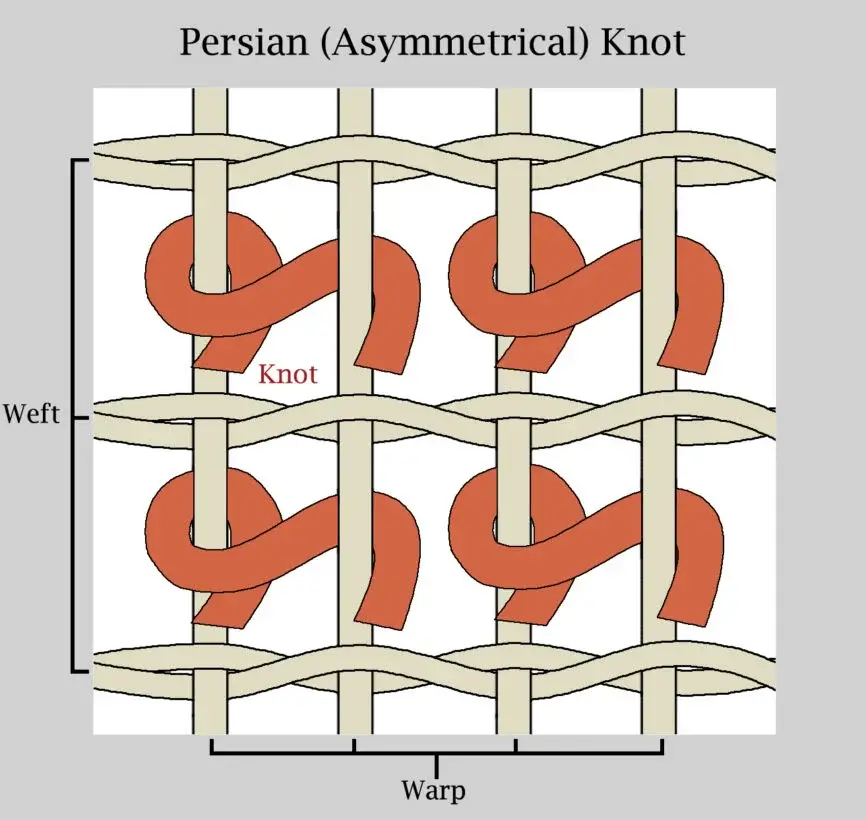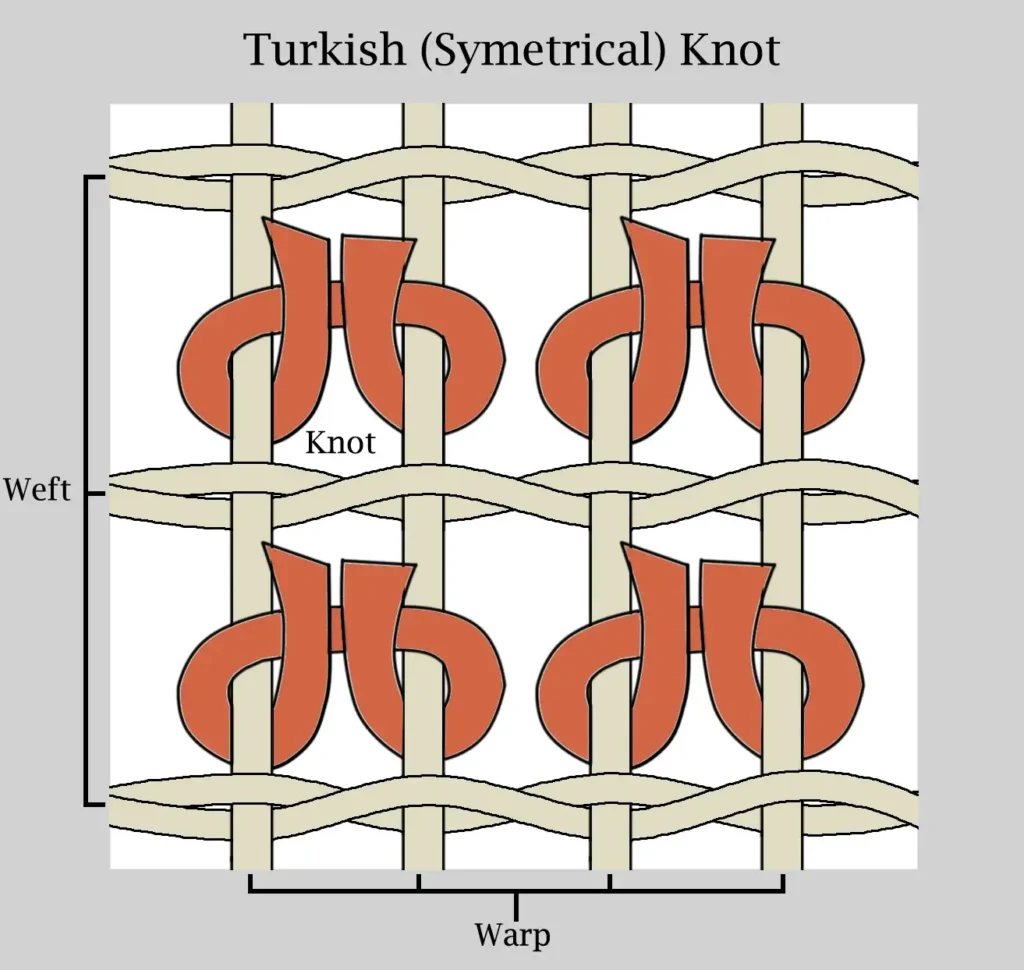Introduction to Knot Density
When look at the back of a carpets, one detail that helps us understand their quality and structure which is “knot density.” It seem like a technical term, but it’s actually quite simple. Knot density refers to how many knots are tied in a specific area of the carpet, knot density is usually measured in knots per square inch (KPSI) or per square meter. Since each knot in a handmade carpet is tied by hand, this number gives us an idea of how much time and effort went into making it. A handmade carpet is a piece of work that takes patience, skill, and time. Each knot is placed by a weaver, working day after day, often for months. So, a higher knot density means that the carpet took longer to make. It also means the design can be more detailed, as smaller knots allow for finer patterns, similar to how more pixels make an image clearer.
However, more knots do not always mean a better carpet. That’s an important point to understand. Many tribal and village carpets have lower knot counts, but they are just as beautiful in their own way. These carpets often have plushy texture and stronger colors. They may not have tiny details, but they carry their own identity and are known for their durability. In some cases, a lower knot count allows for thicker wool and a softer texture. Different regions and cultures follow different styles. In places like Persia or Kashmir, some weavers aim for high knot densities to create detailed floral patterns. In contrast, regions like Balochistan or parts of Central Asia may produce carpets with fewer knots but striking, geometric designs. Both types have their own identity and beauty. From a buyer’s point of view, knot density can help explain the price and value of a carpet, but it should not be the only factor. Materials like wool, silk, or cotton, the natural dyes used, design, and the origin of the carpet also matter. For someone new to handmade carpets, understanding knot density is a good starting point. It helps you understand the hard work behind the rug and the fair pricing.



